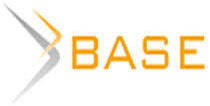Features of geoinformational modeling of tourist and recreational potential (on the example of the Belgorod region)
Taking into account the informatization of society and the need to create a Russian spatial data infrastructure, a modern approach to data organization is required, including tourist and recreational. Within the framework of the concept of the formation of the Russian spatial data infrastructure as an element of national information resources, the development of a geo-information model of the tourism and recreation potential of the region is an urgent task. Assessment of tourism and recreational resources is a difficult task, given the fragmentation of available information. Reducing it to a certain type and a single logical scheme is the primary task of all stakeholders to create information content of the database, constantly maintaining its relevance and reality. The article presents the structure of the developed base of geodata of tourist-recreational resources. Geodatabases have a comprehensive information model for displaying and managing geographic information. This comprehensive information model is implemented by a series of simple tables with data containing feature classes, raster sets, and attributes. In addition, the storage of objects in the form of a geodatabase allows to define the rules for managing spatial integrity and tools for working with multiple spatial relationships of basic features, rasters, and attributes. The used formats and data types of the presented GIS are shown. The authors demonstrate an algorithm for using GIS in the spatial analysis of tourist and recreational resources, which includes six stages. The features of the implementation of tourist and recreational GIS are presented, the difficulties in assessing objects are shown, and ways to solve them are proposed. The technical features of the analysis of tourist and recreational information using GIS tools are described. The analysis of the tourist and recreational potential of the Belgorod region allowed us to identify three areas with the greatest concentration of cultural and historical potential, tourist and recreational infrastructure, road and transport infrastructure, protected areas.
Pavlyuk Y. V., Aleinikov A. S. (2019). Features of geoinformational modeling of tourist and recreational potential (on the example of the Belgorod region). Research Result. Business and Service Technologies, 5(2), 36-45
















While nobody left any comments to this publication.
You can be first.
Butler, R. and Hinch, T. (2007), Tourism and Indigenous Peoples: Issues and Implications, London: Butter- worth - Heinemann, 400 p.
Goeldner, C. R. and Ritchie J. R. B. (2009), Tourism: principles, practices, philosophies, Hoboken, New Jersey: John Wiley & Sons Inc., 655 p.
Hall, C.M. (2005), Tourism, rethinking the social science of mobility, Harlow: Prentice-Hall, 448 p.
Holden, A. (2006), Tourism Studies and the Social Sciences, London: Routledge, 228 p.
Mill, R. C. and Morrison, A. M. (2009), The Tourism System. Dubuque, Iowa: Kendall / Hunt Publication, 436 p.
Kozyrev, V. M. and Kvartalnov, V. A. (2001), Economy of tourism, M., Finance and Statistics, 320 p.
Koroleva, I. S. (2015), Application of Gis-technologies for assessing the ecotourism potential of the old-developed region (on the example of the Belgorod region), Research Result. Series: Technology of Business and Service, V. 1, No. 1 (3), рр. 13-18.
Kuzmenko, Ya. V. (2011), Application of geoinformation technologies in the organization of rural tourism, "Young scientists – geographical science": a collection of scientific papers of the All-Ukrainian conference with international participation. K.: Publishing of geographical literature "Obriy", рр. 50-53.
Mironenko, N. S. and Tverdokhlebov, I. T. (1981), Recreational geography, M., Publishing House of Moscow University, 207 p.
Nefedova, V. B, Smirnova, E.D. and Shvidchenko, L. G. (1973), Methods of recreational assessment of the territory, Bulletin of Moscow University. Geographical series, No. 5, рp. 49-54.
Khokhlova, E. R. (2003), Assessment of natural and territorial complexes of the Upper Volga region for the organization of recreation and tourism, Tourism, Ecology and Sustainable Development: International, Scientific. Practical. conf., Tver, TSU, pр. 420-425
Tsvetkov, V. Ya. (1998), Geographic information systems and technologies, M., Finance and Statistics, 288 p.